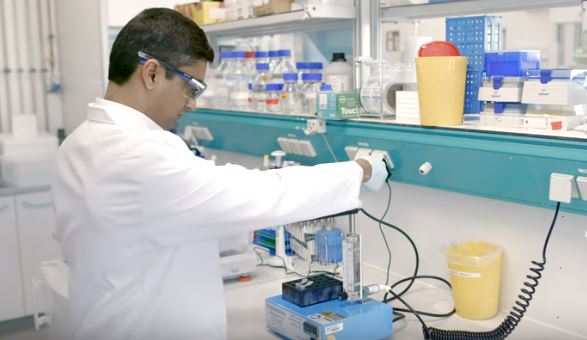
The metabolome, the complete set of metabolites within a biological system, is highly dynamic and can fluctuate within seconds or minutes in response to various stimuli. Because of this rapid variability, sample preparation is crucial for obtaining accurate and meaningful results in metabolomics studies.
Proper handling during sample collection, processing, and storage is essential to maintain the integrity of metabolite concentrations. Inadequate procedures can lead to metabolite degradation or changes that distort the true metabolic state, resulting in inaccurate data.
In this video guide published by the European Molecular Biology Laboratory (EMBL), they detail a step-by-step protocol for the extraction of polar metabolites from HeLa cell cultures using aqueous methanol. This method can be adapted for other types of samples by considering the following critical factors.
Sample Preparation Steps in Metabolite Extraction
1. Type of Biological Matrix: Different sample types, such as tissues, blood, or cultured cells, require tailored approaches to effectively release and capture metabolites.
2. Sample Collection: The timing and method of sample collection are vital to prevent rapid changes in the metabolome. Immediate quenching or stabilization is often necessary.
3. Quenching of Cellular Metabolism: Rapidly halting metabolic activity is crucial to preserve the metabolite profile at the moment of collection. This is typically achieved by cooling the samples or adding specific inhibitors.
4. Extraction & Recovery of Metabolites: The choice of solvent and extraction conditions must align with the chemical properties of the target metabolites. Aqueous methanol is commonly used for polar metabolites due to its efficacy in precipitating proteins and preserving small molecules.
5. Drying: Efficient removal of solvents, often through a nitrogen evaporator, is important to concentrate the metabolites without thermal degradation.
For this video tutorial, the EMBL utilized Organomation’s MICROVAP small vial evaporator, capable of concentrating 24 samples at one time.

6. Storage & Shipment: Metabolites need to be stored under conditions that prevent degradation. Proper temperature control and protection from light and moisture are often required, especially for long-term storage or transportation.
This standardized protocol ensures the reliable extraction and recovery of metabolites, providing a robust foundation for accurate metabolomics analysis. The principles outlined can be adapted to a variety of sample types to meet the specific needs of different studies.
For more detailed procedural steps and additional insights, you can explore the full tutorial Sample preparation: Metabolite extraction.
Nitrogen Blow Down in Metabolite Extraction
The nitrogen evaporator is a critical tool used in the drying phase of metabolite extraction. This step is essential for preparing samples for subsequent analysis, ensuring the integrity and concentration of the metabolites. Here’s why the nitrogen evaporator is so important:
Efficient Solvent Removal:
- The nitrogen evaporator uses a stream of nitrogen gas to gently blow over the surface of the sample, accelerating the evaporation of solvents without the application of heat. This method is highly efficient, particularly for volatile solvents commonly used in metabolite extraction.
- Efficient removal of solvents is crucial because residual solvents can interfere with downstream analytical techniques like mass spectrometry or nuclear magnetic resonance (NMR) spectroscopy.
Prevention of Thermal Degradation:
- Many metabolites are heat-sensitive and can degrade or transform when exposed to high temperatures. The nitrogen evaporator allows for solvent removal at room temperature or slightly elevated temperatures, which helps preserve the chemical integrity of the metabolites.
- By avoiding the use of heat, the nitrogen evaporator minimizes the risk of losing or altering delicate compounds, leading to more accurate analytical results.
Concentration of Samples:
- In metabolomics, detecting low-abundance metabolites often requires concentrating the sample. The nitrogen evaporator excels at concentrating samples by removing solvents efficiently, which is especially beneficial when working with small sample volumes or low-concentration metabolites.
- This concentration step enhances the sensitivity and detection limits of analytical methods, making it possible to identify and quantify even minor components in the metabolome.
Speed & Convenience:
- The nitrogen evaporator provides a faster drying process compared to traditional drying methods like lyophilization or rotary evaporation. This speed is particularly advantageous in high-throughput settings where numerous samples need to be processed quickly.
- Additionally, the equipment is user-friendly and often allows for simultaneous drying of multiple samples, increasing throughput and efficiency in the laboratory.
In metabolite extraction, the nitrogen evaporator is indispensable for its ability to rapidly and gently remove solvents, concentrate samples, and preserve metabolite integrity. Its role is crucial for preparing high-quality samples that yield reliable and reproducible results in subsequent analyses.
Last updated: June 26, 2024
